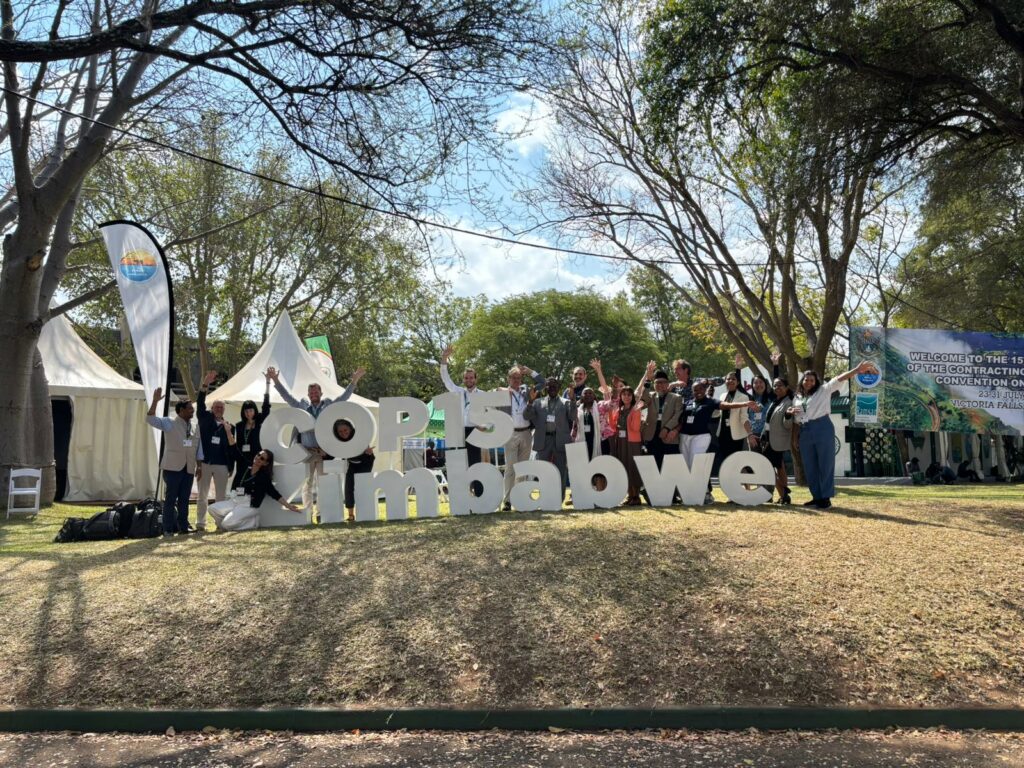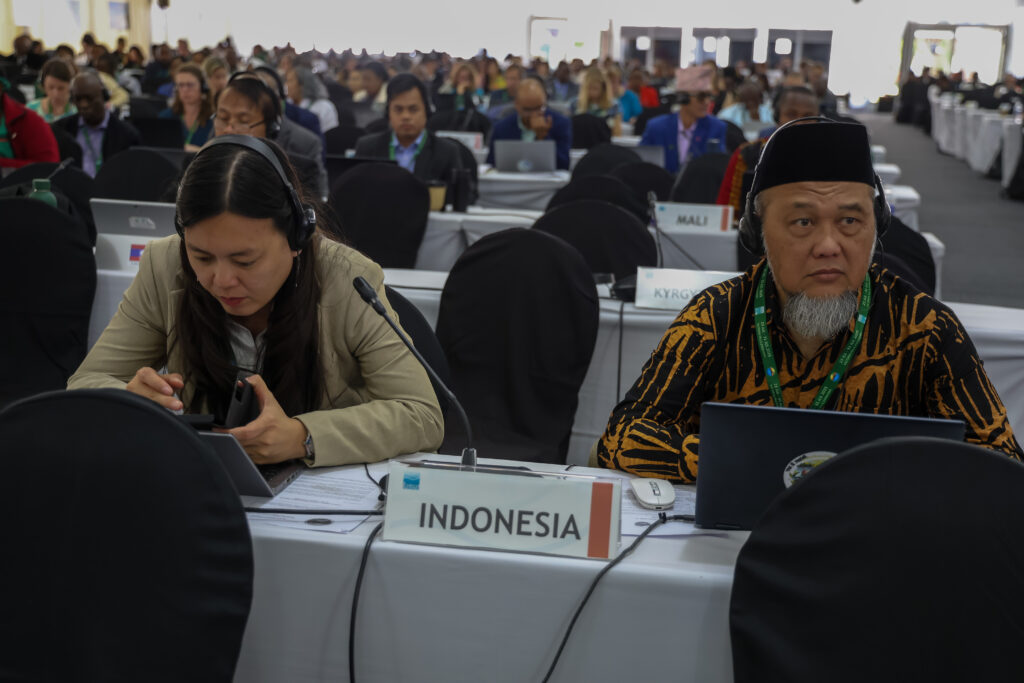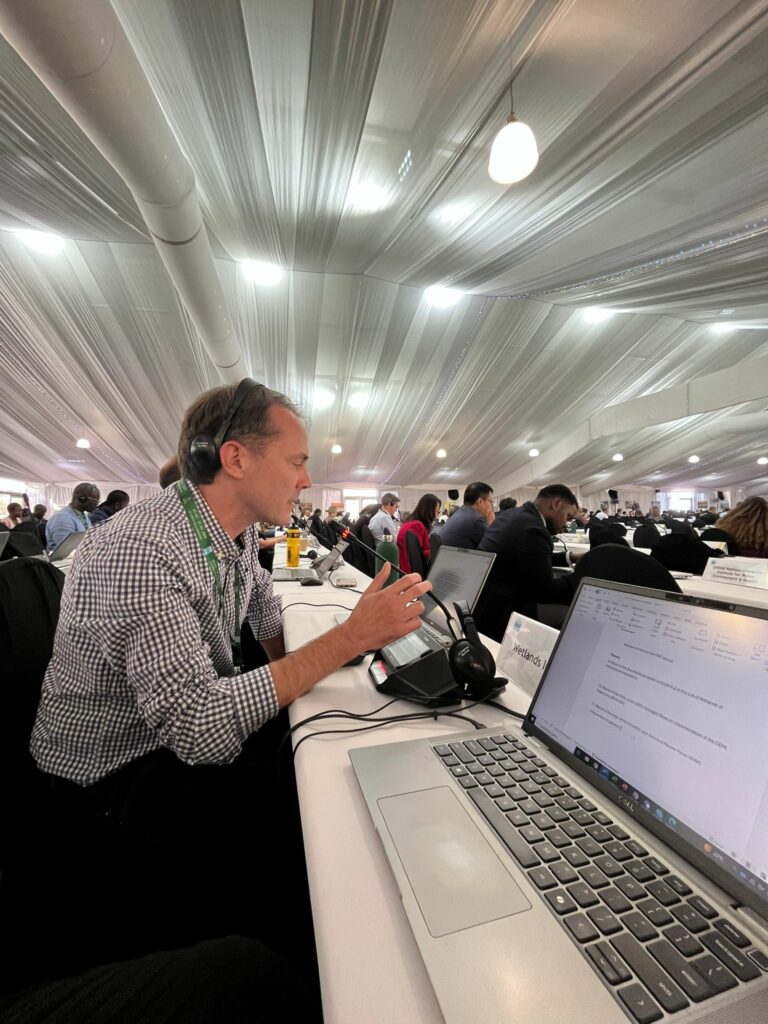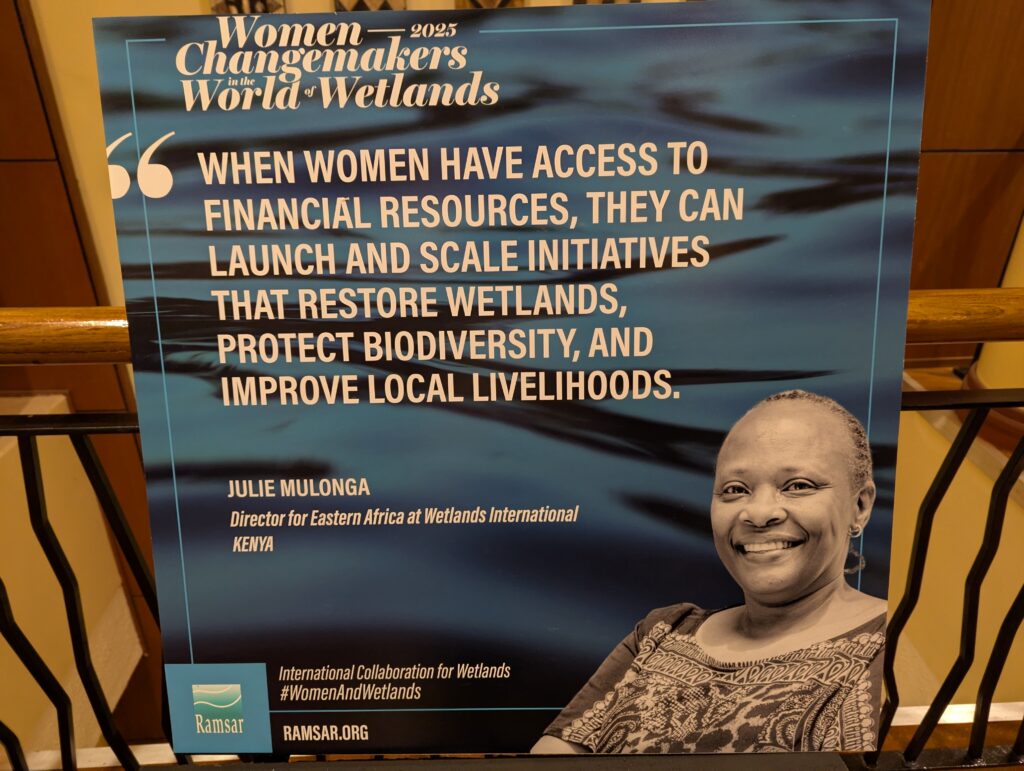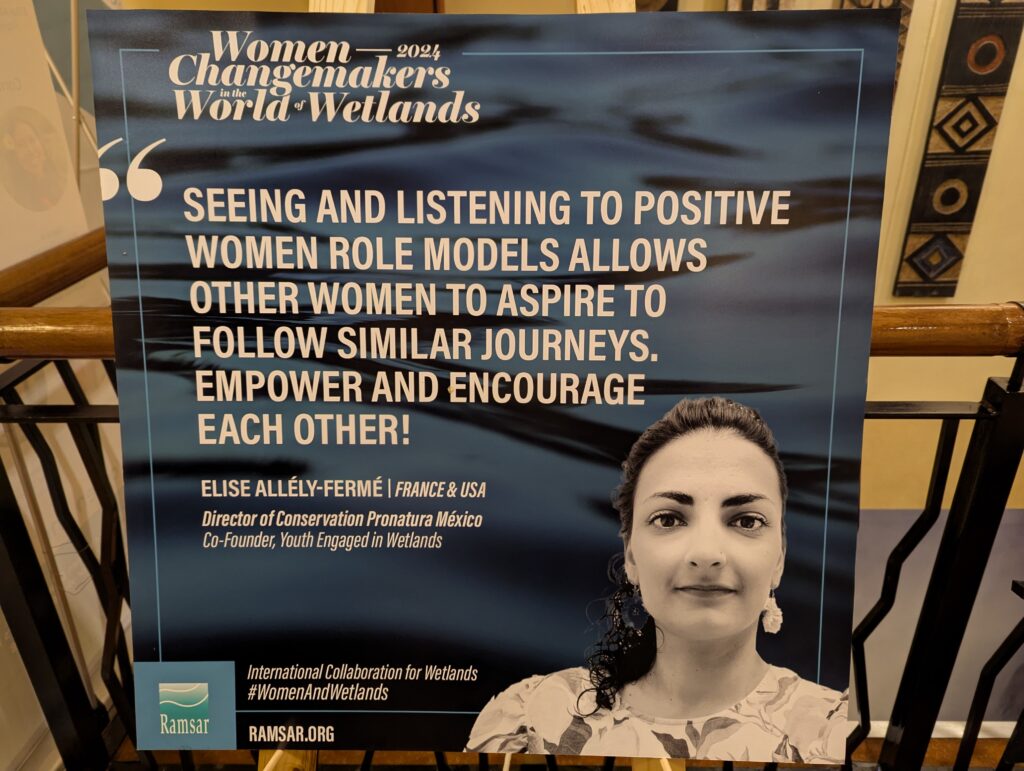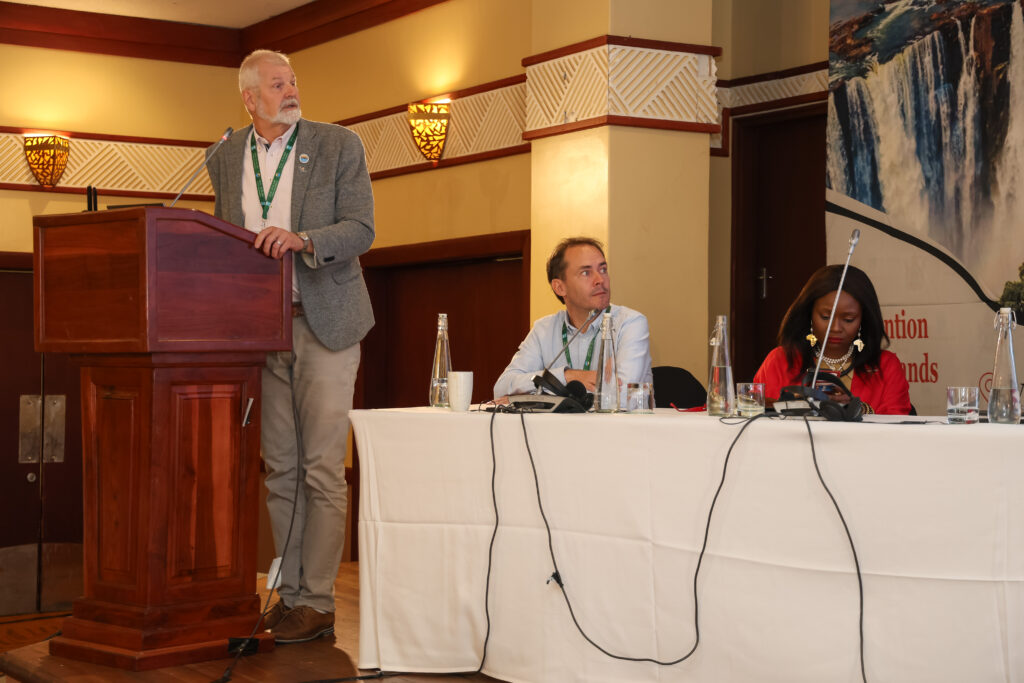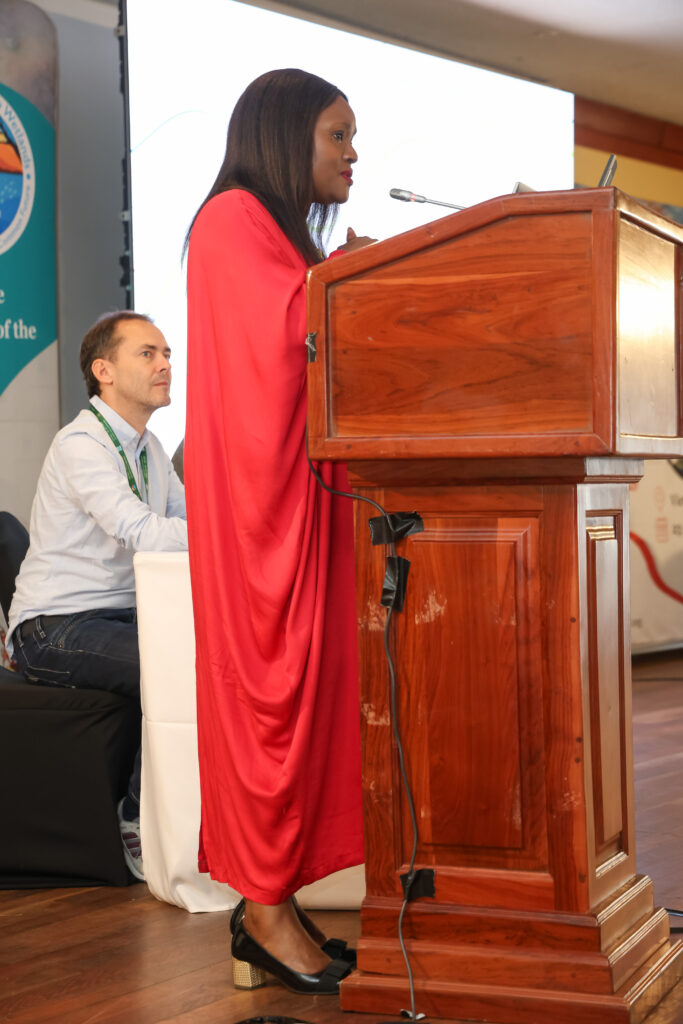
Boost for conservation of world’s wetlands at COP15 in Zimbabwe
With the world’s wetlands still being lost at an alarming rate and facing ever increasing threats, the scene was set for a pivotal Convention on Wetlands COP15 – and it didn’t disappoint with Contracting Parties managing to agree on a range of critical issues, which will help to strengthen the Convention and accelerate national and global efforts to protect and restore wetlands.
Critically, after days of intense negotiations, the Contracting Parties reached consensus on the two most critically important issues – adoption of a new 10-year Strategic Plan for the Convention to guide national wetland work and additional funds to deliver it.

“This conference has paved the way for countries to significantly scale up the protection and restoration of their wetlands – and safeguard the irreplaceable benefits they provide for people, nature and climate,” said Laura MacKenzie, Head of COP15 Delegation, Wetlands International. “Negotiations and plenary debates were tense at times, but consensus is the core of the Convention, and we welcome the successes achieved at COP15 – as well as the reminder of the importance of multilateralism.”
The adoption of the 5th Strategic Plan was a long and arduous process. Ambition and commitment were initially lacking, resulting in the IOPs intervening in plenary earlier this week to issue an urgent call to Contracting Parties. “As IOPs we are disappointed that with 3 days left of negotiations, we are barely further along in the process of reaching consensus on the Strategic Plan than we were at Standing Committee 64 in January. We call on all Parties to conclude these crucial negotiations in the spirit of cooperation, consensus, understanding and urgency. Now is the time to lean in, not take 10 steps back.”
In the end, the COP came to a compromise agreement on both critical issues. The new 5th Strategic Plan will help countries to chart a more ambitious course thanks to some strong text on targets, hard-fought references to transformative change, and very importantly, agreement for Standing Committee 67 to adopt interim indicators and a reporting framework.
Meanwhile, a 4.1% budget increase is less than the highest 11.3% rise that was on the negotiating table, but much better than the last 15 years of 0% nominal growth.
“This budget increase might look like a small amount, but it is a big deal and will ensure that the Convention is not seriously hobbled by a lack of funds and so better able to carry out the critical work it has been tasked with,” said Richard Lee, Global Communications Director, Wetlands International. “What we really need now is an historic increase in global investment in the protection and restoration of wetlands at national level for the benefit of people, nature and climate.”
There were many highlights during the COP with the tone being set at the opening press conference, when Zimbabwe Minister of Environment, Climate and Wildlife, Dr Evelyn Ndlovu, announced that Zimbabwe would restore 250,000 hectares of degraded wetlands by 2030 and protect critical freshwater wetlands by creating 5 new Ramsar Sites of International Importance.
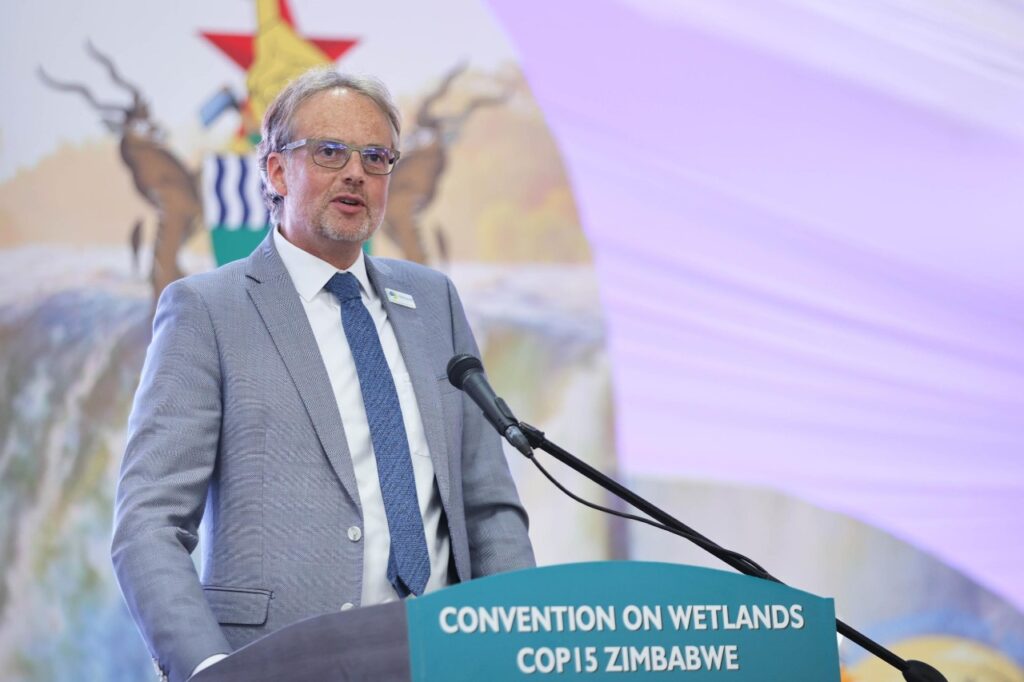
Wetlands International’s 5 key strategic priorities going into COP15, shared by the other International Organization Partners (Birdlife International, IUCN, IWMI, WWF and WWT) were delivered by our CEO Coenraad Krijger in his opening statement to plenary on behalf of the IOPs – and most of them were secured fully or partially.
- Adoption of an ambitious new Strategic Plan;
- Adoption of several key draft resolutions;
- Mobilisation of funds for the Convention and wetland work;
- Compelling call for healthy wetlands to be recognised as key to climate mitigation and adaptation ahead of Climate COP30 in Brazil;
- Boost support for voluntary global initiatives like the Freshwater Challenge, the Mangrove Breakthrough, and the new Peatland Breakthrough
On draft resolutions, we were delighted that all our priority draft resolutions were adopted, thanks to the efforts of the countries championing the resolutions, our delegation’s tireless policy and advocacy work, and the critical support of our partners, particularly the IOPs:
- Establishment of the Global Waterbird Estimates Partnership (GWEP) and delivery of the 2027 edition of Waterbird Population Estimates, which was the first draft resolution to be adopted at the COP;
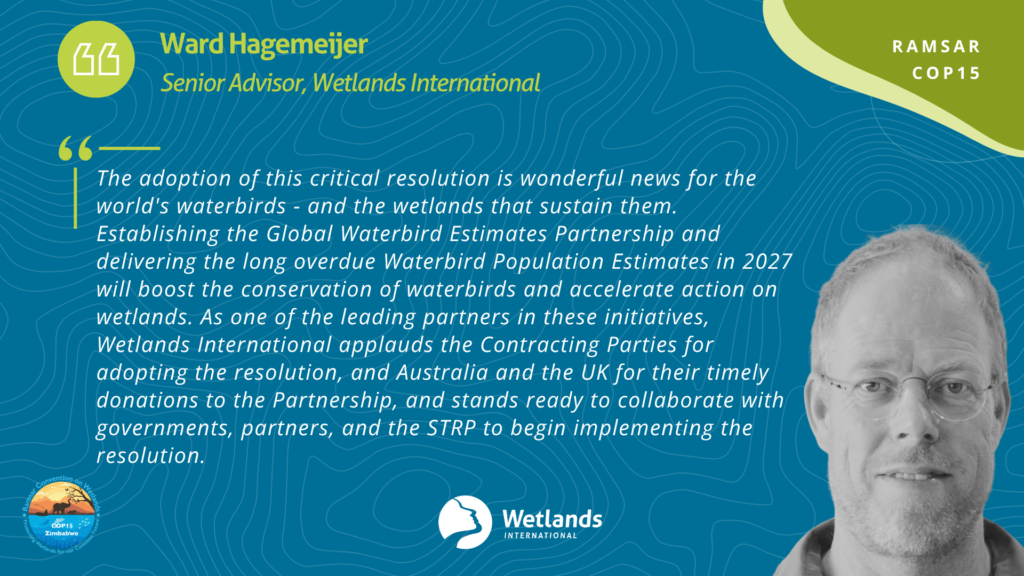
- Restoration of degraded freshwater ecosystems to support ecological character, biodiversity, and ecosystem services, which is critical for the Freshwater Challenge;
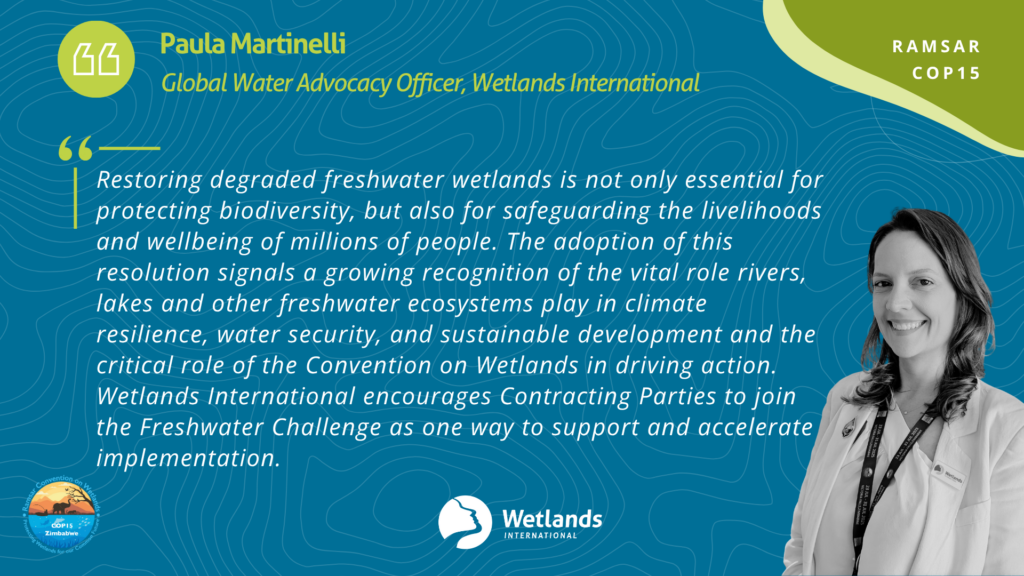
- Achieving the equitable governance and effective conservation of wetlands as protected areas and other effective area-based conservation measures (OECMs);
- Strengthening national actions for the conservation and restoration of waterbird flyways and critical sites; and
- Enhancing the Convention’s visibility and synergies with other multilateral environmental agreements and other international institutions.
Many other important resolutions that we supported were also adopted, including resolutions on the STRP, sustainable livelihoods, Ramsar Regional Initiatives, CEPA, river dolphins (which morphed into a resolution on river dolphins and freshwater indicator species) and more.
This is as good a moment as any to share our appreciation for the work of the COP15 President, who made sure to keep proceedings moving (and push for interventions to be ‘brief’) and oversaw plenary with clarity, collaboration and (some much needed) humour.
Meanwhile, along with the historic 4.1% increase in the budget for the Convention, we were also welcomed two timely contributions from Australia and the UK to fund waterbird work. But many funding conversations were held and hopefully, these will bear fruit after the COP.
There was definitely progress on the voluntary global initiatives. In particular, during a side event at COP, we were thrilled to announce the Peatland Breakthrough – a collaborative effort led by Wetlands International, UNEP, FAO, the Global Environment Centre and the Greifswald Mire Centre (GMC), Landscape Finance Lab, RE-PEAT and TNC – in collaboration with the High-Level Climate Champions Team, the Convention on Wetlands, and the Global Peatlands Initiative.
What’s more, Peru immediately became the first Champion Country for the initiative, while Germany and DR Congo expressed support for the initiative.
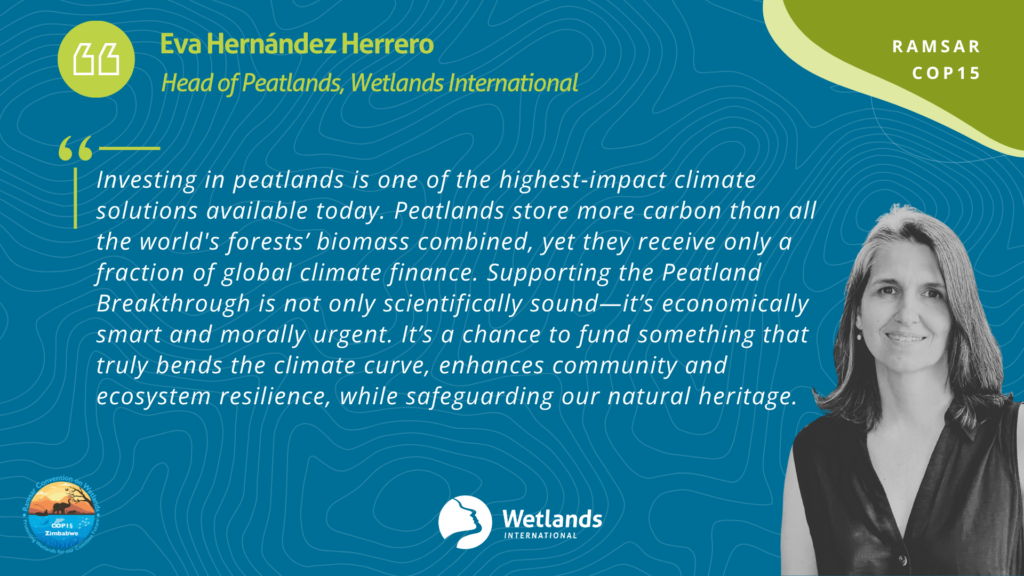
Meanwhile, along with the adoption of its resolution, the Freshwater Challenge featured in a high-level side event and was referenced numerous times. The Mangrove Breakthrough, too, was the talk of the town on World Mangrove Day.
And finally, we are thrilled that the next Wetlands COP16 will be hosted in Panama in 2028.
“This will be a key moment to showcase Panama’s wetland conservation, environmental diplomacy, and sustainable development – and further enhance the importance and impact of the convention on wetlands, from local to global level,” said Mayllely Cabrera, Director, Wetlands International Panama. “With our team in Panama in the lead, Wetlands International stand ready to support the government to make the most of this unique opportunity.”
A slideshow with 7 images
The slider is set to loop infinitely.

